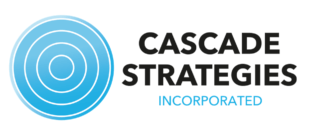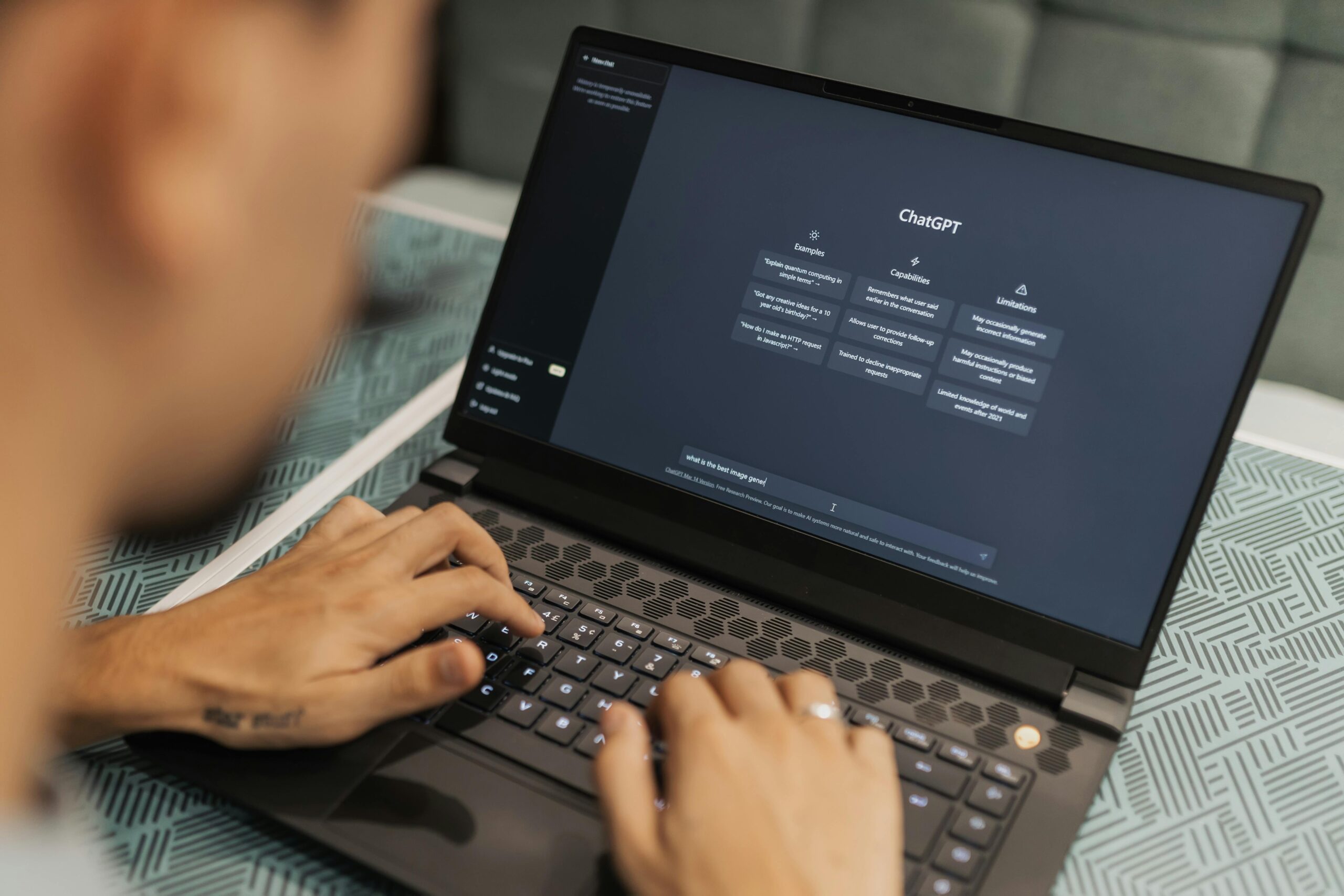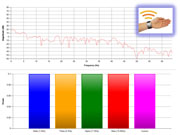
Nov
“Humanizing” Market Research with AI
jerry9789 0 comments artificial intelligence, Brand Surveys and Testing, Burning Questions
The Boon and Bane of AI
The increasing and widespread utilization and demand for Artificial Intelligence have been met with both excitement and reservation. Excitement for the possibilities AI’s implementation unlocks, oftentimes steps ahead of the curve or beyond expectations; reservations not only stemming from the risks over its unethical and unchecked use, but also the ramifications for human involvement now that intelligent machines represent an optimized and economical choice for completing tasks and processes. But can there be a middle ground somewhere where AI and human engagement coexist and collaborate?
The “Humanization” of Market Research
“Capturing the Human Element in an Artificial World” by Eric Tayce (Quirk’s Marketing Research Review, Sep-Oct 2024) posits that such a midground is possible, especially in market research. An industry that’s all aware of its excessive dependence on technology to necessitate a push to “humanize” research data, it saw a dramatic shift from “data-intense tomes and clinical-sounding slide titles” to “streamlined, narrative-style reporting” focused on “the unique motivations and experiences that drive customer behaviors.” The latter “humanized” approach is able to communicate business goals while connecting and engaging on an emotional level. However, generative large language models (LLMs) cast a shadow on this “humanized” approach by offering synthetic outputs and progressive algorithms.
But combining both AI and efforts to “humanize” research can result in the whole being greater than the sum of its parts. The article shared that AI can help collect more unstructured data from survey research by employing conversational chatbots to create a natural, richer experience for the respondent. That unstructured data in turn can potentially provide more organic, more human insights with AI-powered algorithms, an undertaking that was once considered too complex or time-consuming. AI can also build multifaceted perspectives through context by linking survey records with a broad range of data sources. And in lieu of traditional static deliverables, data and insights can be presented in a vibrant and interactive narrative by an AI-powered persona.
The “Human” Element
All these interesting prospects can only be achieved when AI is tempered by high-quality human input and thoughtful implementation considerate of ethical and moral implications. Aside from AI mistakes and hallucinations existing, AI has been observed to be too helpful and excitable. Human oversight and input remain key in ensuring AI models are trained, fine-tuned and grounded with quality and relevant datasets while having enough flexibility to engage appropriately in open-ended interactions.
There’s no denying just how transformative AI is in reshaping industries today, including market research. Despite concerns of machines taking over jobs, one can look at it with the perspective of roles changing and adapting. AI with its generative and synthetic capabilities can elevate the “humanization” of market research, but to get to that point we simply can’t forget that humans are indispensable to the whole process.
Featured Image Copyright: GrumpyBeere
Top Image Copyright: Darlene Anderson

Aug
Can Synthetic Respondents Take Over Surveys?
jerry9789 0 comments artificial intelligence, Burning Questions
What Are Synthetic Respondents?
AI has increased operational efficiency by streamlining knowledge bases and shortcutting processes so it’s no surprise people and companies are looking for more ways for its application. For market research, one curious consideration is whether it could take over surveys, essentially by replacing actual respondents with synthetic respondents.
Also known as virtual respondents, digital personas, and Virtual Audiences, synthetic respondents are individual profiles constructed by Large Language Models (LLMs) from real or simulated data. Ideally, the data or descriptions used to generate these profiles come from previously conducted surveys and are combined with individual-level demographics, attitudes and behaviors.
Using these synthetic respondents over real respondents could benefit your research with speed, accuracy and cost savings, at least according to their advocates. Basically, you just need to conduct one survey and from the profile description or data you gathered from the actual respondents, you’re able to generate results from the constructed individuals over and over for succeeding studies and research.
Testing Synthetic Respondents
While synthetic respondents could accurately represent real respondents, relying exclusively on the results from these AI-based individuals may not be entirely beneficial. A webinar hosted by Radius Global took a closer look at the potential of AI-generated synthetic respondents through three case studies of quantitative concept testing, quantitative communications research, and qualitative communications research.
Aggregate results for the concept tests involving game controllers indicate somewhat strong similarities between the results of the real and synthetic respondents. This extends to the results from the quantitative communications research when it comes to the believability of statements on the benefits of milk, although there were some differences. The differences were much more pronounced though when it comes to surprise over the same statements, and there was incongruence when considering how each statement could possibly increase milk consumption.
The qualitative communications research was seeking in-depth insights into women’s needs, perceptions, and preferences for running a race or marathon, with the feedback gathered meant to be used for creative content. Personas were constructed from the profiles of six women aged between 18 and 64 years old who ran at least once in an average week. They had an LLM assume each persona to allow a comparison between findings from real participants to synthetic respondents.
They found that while both real and synthetic respondents have somewhat similar responses when it comes to functional aspects as goals for women in general pursuing fitness, the AI responses lacked emotional expressions. There are also little differences in the synthetic respondents’s responses despite having different profiles, and there was even a lack of subtle differences.
As for concerns among women who are aspirational marathon runners, the synthetic personas were consistent in their responses while the real respondents provided more nuances, variety, and perspectives more prevalent among women.
Synthetic Respondents Vs. Real Respondents
Synthetic respondents appear to be useful if you’re evaluating existing ideas and concepts; however, if you’re looking for “breakthroughs” or essentially new insights you would’ve never arrived at had you not performed the case study or research, you would need to engage with real respondents, relying exclusively on their results or combining them with that of synthetic respondents. Yes, there could be cases where synthetic respondents could be used, but the results must be extensively validated. It would also require increasing the efficiency of how data used to construct these individuals are analyzed in addition to enhancing the quality of the data and information gathered for these profiles through thorough screening, intelligent probing, and smart choice models.
There is a place for synthetic respondents in market research, but as another tool in a researcher’s disposal. They won’t be taking over surveys nor replacing actual respondents wholesale anytime soon it seems, as that elusive “Eureka” moment researchers seek are inherently tied with the nuances and perspectives of human emotion and experience you just simply couldn’t construct.
Photo courtesy of Pavel Danilyuk

Jul
AI In Market Research: The Story So Far – Chapter 3: A Glimpse Into A Future with AI
jerry9789 0 comments artificial intelligence, Burning Questions
This is the third installment in our series on AI webinars. The inspiration for this series is a simple question about what these AI seminars are saying. There are hundreds of these seminars floating about, all based on the premise that AI technology is here to stay, people are curious about it, and they want to know how it will affect their lives.
We asked one of our staff members to attend several of these AI webinars in pursuit of the answer to this question: what are the AI webinars really saying? What are the common themes, if any? While the first and second chapters focused on AI’s ubiquity and limitations respectively, this third installment focuses on the replacement of humans and human work.
Will Jobs Be Lost Because of AI?
AI is a threat to most jobs including those in the market research industry but this is most especially true with any repetitive or routine work grounded by established knowledge or processes. AI provides the advantages of streamlining your knowledge base and shortcutting processes. If you’re on the process side and you fail to embrace AI, clients might find you costlier and less optimized.
The market research industry had already learned this lesson in the early 2000s when the big companies didn’t take online research seriously. They subsequently found themselves trying to catch up some years later after the widespread acceptance and adoption of online research. Whoever waits too long or neglects to embrace the newest tool would most likely fall behind as the industry shifts towards AI-driven processes.
What are the AI webinars saying about Human Replacement?
This doesn’t necessarily mean that humans would be fully replaced and displaced by AI in market research. AI is, after all, a tool. All tools revolutionize optimization but optimization by definition doesn’t make things better. AI will revolutionize things, but it is not the big revolution that will make everything different.
To illustrate that last point, a question was raised in one of the webinars about the possibility of a data collection tool that can replace surveys. There wasn’t a definitive answer given by the panelists since it’s more of a question of what surveys would actually look like. It would depend on what is wanted to be accomplished, the type of information sought, and how they would engage and elicit reactions.
The subject of AI-powered market research alone attracts investors. Embracing AI would not only optimize your market research processes but it would also add value to your insights. Having said that, AI places everybody on the same playing field, except those who recognize and seize the opportunity to experiment with AI are able to gain an edge. The key would be to build on experience rather than purely on the thirst for innovation; try to be at the front of things, but don’t try to be the first one. Try to find a good balance by going with the flow while making smart moves and decisions.
It’s been noted that the profile of the researcher of the future is a little bit more techy and into IT integration. New business intelligence leaders today have IT backgrounds, and this is different from two decades ago. Even in a world with AI-based market research, there would be room for the human factor that adds value from experience — something AI won’t be able to replace.

Jun
AI In Market Research: The Story So Far – Chapter 2: Limitations of AI
jerry9789 0 comments artificial intelligence, Burning Questions
Despite AI’s expanding popularity in market research, experts are fully aware that there is still a lot of ground to cover regarding their effectiveness and optimization for use cases, along with understanding and mitigating their risks and limitations.
These limitations reveal themselves most especially in efforts to replicate human behavior. One research paper on a survey employing Large Language Models observed how effective these LLMs are in understanding consumer preferences with their behaviors consistent with four economic theories, but noted that there were demonstrations of extra sensitivity to the prompts they were given. In addition, there were indications of positional bias wherein the first concept was selected more often than the others that were also presented.
AI has also been found to be too optimistic, tech-forward, and self-interested. For example, ChatGPT is inherently focusing on maximizing expected payoffs, whereas a person would often act in a risk-averse way for gains and risk-seeking for losses. AI also exhibits a generally higher level of brand association than humans, resulting in higher brand scores. However, it struggles with lesser-known topics, notably in scenarios where new commercial products are tested and targeted toward a specific audience.
While it can be addressed by cautious prompt engineering, AI hallucinations are an unintended effect of the helpful aspect of these models where they generate unnecessary output stemming from patterns or elements they perceived but are nonexistent or imperceptible to human observers.
And while more on the side of risks than limitations, there is an understandably and famously increasing concern from artists over how text-to-image generators threaten to replace them and their work, just as there are certain roles in the market research sector that are in danger of being taken over by AI.
Perhaps the ideal recommendation for utilizing AI while keeping in mind its limitations is to use it in cases where it’s most effective and productive with the understanding that it might excel in one scenario, but it doesn’t mean it will be just as effective in another situation.

May
AI In Market Research: The Story So Far – Chapter 1: Adapt or Get Left Behind
jerry9789 0 comments artificial intelligence, Burning Questions
Whether you like it or not, AI is here to stay. Yes, AI is a threat to most jobs, including those in the market research industry, since it shortcuts processes while optimizing operational efficiency. While market research technology didn’t develop as fast as other industries in the early to mid-2000s, the advent and subsequent mainstream appeal of AI has forced market research to get with the times. You’re in trouble if you fail to embrace it but if you do, you get to be on the winning side.
Experts expressed that we’re still in the early exploratory stages of AI but there is already depth in its application in market research. Take, for example, the humanization of surveys. An interactive and dynamically probing AI improved overall data quality in more than one experiment due to an increased engagement from respondents resulting from a sense of appreciation over the perceived but simulated attention paid to them and their responses during the survey. In the same vein, employing a conversational AI voice has been shown to dramatically drive engagement for better data.
That latter effort to humanize surveys has created an influx of voice responses and content, leading to the new question of what we should now do with all those resources, which would be a byproduct of AI-based solutions. Of course, LLMs and other existing AI models would be employed to help find the answer to this question.
Aside from solving dark data, AI has also displayed impressive capabilities to answer choice tasks, especially performing well with well-known topics and products, even outdoing humans in some surveys where humans get confused or find it hard to render a judgment. It’s also been considered for AI to adapt existing survey data for a new topic to save time. AI’s role in market research might still be experimental at this point, but it has grown to the point where it’s being utilized and adapted to take on one challenge after another.
Our second entry in this four-part blog series highlights some of AI’s risks and limitations, and how understanding and mitigating these factors can lead to their effective and optimal utilization.

May
AI Webinars Are Everywhere – What Are They Really Saying?
jerry9789 0 comments artificial intelligence, Burning Questions
With AI becoming more ubiquitous each passing year, it’s no surprise that webinars dedicated to the subject have been springing up everywhere. Amid the hype, people are either curious, interested, or to some degree invested in what AI’s increasing popularity means for them as well as the industries they’re part of. These webinars serve as the perfect platform for industry experts to share their experiences, thoughts, and opinions on AI’s current and future implications.
What are these AI webinars really saying? We sent one of our staff members in search of the answers. Each webinar talks about the impact of AI on the economy, society, and culture, but they must share some common themes or overarching ideas. What are these common ideas? To get at the answers, we asked our staff member (Emil Deverala) to focus on the impacts on an industry we truly understand: market research.
During April and May 2024, Emil attended three AI webinars: “Market Research in an AI World,” “AI in Marketing Research: Expert Panel Discussion,” and “Building New Business: Five Ways Firms Are Driving New Revenue with Automation And AI.” After each webinar, Emil was asked to not only summarize the items that were discussed, but also share his larger thoughts about what the webinar was really trying to say to the world about what we can expect from AI.
Emil eventually boiled things down to four main ideas or themes. In this series of blogs, we’ll be exploring each of those themes. Here’s the first in our series. It focuses on why people in the market research industry need to pay attention to AI in the first place.

May
You’re familiar with this scenario: a business organization runs into a problem they can’t solve in-house, so they turn to your consulting firm to help figure out the solution. The problem turns out to be more complicated than anyone could imagine but thanks to your experience and expertise, you were able to come up with a strategy to solve it for good. Here’s the twist: given the complexity of the problem, the business wants you to back up your solution with something other than your experience and expertise, something that would help them understand what caused the issue and why your strategy is effective in solving it. This way, they can replicate the solution in-house, while also leaving the door open to work with your consulting firm again in the future on another problem.
Photo courtesy of geralt
Why Use Market Research For A Consultancy Project?
If you haven’t yet, this would be the perfect opportunity to partner with a market research company. Your strategies and solutions are mostly born from your experience and expertise, but market research provides you with the data and insights to back up your advice. Sure, you can simply explain that your recommendations work because you’ve seen this happen before with the solutions you provided in the past and therefore it should work this time as well; market research achieves the same effect, except that it does the job with nuanced or layered explanations formed from case studies, working hypotheses, documented observations, referential works, and more.
In some cases where experience and expertise fall short, market research can serve as the foundation from which you develop your strategies and solutions by gaining a deeper understanding of not only the issue at hand but also other relevant factors such as the company, the competition, the customer base, trends, as well as the industry and the market itself, through quantitative and qualitative analysis. Market research goes beyond helping solve company problems; it can also help consulting firms guide their clients’ growth and business, increase brand awareness, and reach sales goals by resonating with their target audience through a data-driven and context-based approach.
Market research can also be key in helping you compete with or stand out from other firms. It can help determine key points in your competitors’ strategies to help differentiate your marketing approach or discover and tap into marketing space or niche audiences that they haven’t targeted. Sure, your competitors can utilize market research just as well, but if they’re only using it to support their existing business solutions and strategies while you leverage it to uncover new answers or innovate specific or contextual tactics for your clients, that can help get you a leg up over them.
Photo courtesy of geralt
How To Conduct Market Research for a Consulting Project
The process for conducting market research for a consulting project can be broken down into a few steps, starting with determining the focus of the research by defining the problem we want to solve or the goal we plan to achieve. In most cases, the focus may already be informed by the client and the project theme itself. From there we’ll shape the primary question we’re looking to answer, then form secondary and tertiary questions out of it, deriving the data types and sources we’re going to need along with the criteria and metrics from which we’ll measure the progress and success of our research.
Next, we’ll pick the research method we’ll be employing, which will be based on the type and sources of data we need and will use. Are you doing primary market research to gather firsthand data from your target audience or the market itself? Are you planning to complement your primary research findings with existing data from external sources through secondary market research?
Interviews, focus groups, and surveys are commonly used when gathering data directly ourselves, but if they fit our needs we can also utilize the top-down or bottom-up approaches. The former approach sees our research start with smaller elements to gain data for insights leading to a larger picture, while the latter has us researching first on a broader level with the resulting data used to learn specifics. We can also refer to previous but similar projects which can help save time and resources, but bear in mind that we might need data specific to the present context to arrive at the ideal solution for that project.
We’ll next proceed to data collection and analysis wherein we’ll observe and record the research process, taking note of any difficulties and divergences, while checking the quality and validity of our data through testing, cross-validation, and the like. We’ll be looking out for patterns, trends, correlations, and even differences, along with their implications and insights. We’ll also use statistical tests, confidence intervals, or error margins to evaluate the reliability and significance of our results.
When presenting our findings, it’s best to deliver what we discovered in a clear and concise yet engaging manner using language and visuals appropriate for our audience. For example, a somber, businesslike tone and straightforward visuals used when presenting to a room of executives and higher-ups might not work as well with a group of creatives. Perhaps communicating your findings in a story-like fashion to the latter might inspire their interest more and get your points across better by stirring their imagination. Visual tools can include reports, presentations, dashboards, or infographics, with highlights focusing not only on key takeaways and recommendations but also on any limitations we encountered or assumptions we made.
Photo courtesy of geralt
How To Find The Right Market Research Group For Your Consulting Firm
Not all market research companies are the same, of course. You’ll find large MR firms that employ different teams for every phase of your consulting project as well as smaller groups with one unit dedicated to overseeing the entire process from start to finish. You would want to go with a market research group that not only has some experience working with consulting firms but also does a regular volume of business with consultancies in the current day. Their experience would most likely translate to a higher understanding of the nature and challenges of your consultancy business in addition to adapting and aligning more easily with your goals and the way you do consulting work.
When interviewing market research teams you’re considering working with, you might want to ask them for any instance or past case history they can share wherein despite limited time, resources, and funds, they were still able to deliver outstanding insights and results. This will indicate how they perform under pressure as well as gauge their competitive drive.
But just because they rose above past difficulties and limitations doesn’t mean you’ll be short with them. On the contrary, you need to ensure your chosen market research team not only has the proper tools and resources but also enough time, room, and funding to help them perform their job well. Their success is, after all, your success. Allow them the freedom to use their discretion to take risks, experiment, or innovate, since the breakthroughs they find can make the difference in the quality and ingenuity of your business strategies compared to that of your competitors.
Let your consulting firm stand out from the rest of the competition with data-driven strategies and insights-based solutions for your clients that high-quality and high-level market research can achieve. Partner with Cascade Strategies and back up your consultancy with groundbreaking methodologies and over three decades of market research experience that other leading US and international companies have benefited from. Contact Cascade Strategies today and find out how we can help your consulting firm solve problems and achieve your goals.
Photo courtesy of 089photoshootings

Apr
Can A Small Market Research Firm Help A Big Tech Company?
jerry9789 0 comments Brandview World, Burning Questions
Market research has proven itself to be an indispensable and critical tool in helping companies identify their audiences and achieve their marketing goals. As with any tech company, market research groups can come from small or large firms. You might be inclined to go with a larger market research firm because of the common adage “Bigger is better,” but you just might be surprised by what a smaller market research group can accomplish for you and your big tech company.
What makes smaller market research firms different from their larger counterparts? What are the advantages of working with a small market research group? Off the top of your head, you might think that cost-effectiveness is the main reason. But it goes well beyond that. Here are three good reasons why partnering with a small market research firm benefits your big tech company:
Copyright: geralt
One Team from Start to Finish
From the initial sales meeting to the project’s conclusion and implementation of recommendations, you’ll be interacting with the same team throughout. With a larger company, you might need to work with different teams for every phase of the project, and you might find yourself having to repeat yourself now and then, especially with the nuances of what you want or what the project needs. There’s also a risk that certain details and preferences might be overlooked or don’t get passed on as you switch from one team to another as you move through the phases.
Not only is there a seamless transition between stages of the projects with one team, but Cascade Strategies also employs veterans of the industry who bring to the table a potent combination of well-rounded skillsets and experience. Not only are they able to effectively understand your preferences and ideas no matter which phase of the project you’re in, but they also can oversee and recognize the effects of those concepts in the grand scheme of things or when they would come into play.
Copyright: ar130405
Better Communication and Responsiveness
With a smaller but experienced team, communication lines are much more open with members empowered to act or resolve issues when the opportunity arises. A project might encounter delays with a larger firm of multiple teams due to miscommunication (“I wasn’t informed”) or hindrances resulting from the division and distribution of roles and responsibilities (“Not my job”). Thus, a smaller team might also be more available and receptive when it comes to assisting a client whenever they raise a question or concern.
One team alone holding a meeting might slow down the overall progress of others working on the project, so just think of the impact if multiple groups need to take time off for discussions and calibrations. The time multiple teams take for meetings can be time used by a smaller team for revisiting ideas and scenarios until a “breakthrough” is achieved.
You might also find a smaller team is more invested in the project, hence the clearer communication and quicker responses. Multiple teams might be handicapped with multiple projects going on at the same time and the need to meet deadlines. A smaller team might handle more than one case study at once, but given that they’re overseeing the whole thing from start to finish, there exists a passion to get everything done right, and seeing the client and team’s visions come true no matter how big or small a project is.
Copyright: geralt
Culture
Speaking of passion, you might find a smaller market research firm having a more “can do” attitude and approach to your project. Not only that but at Cascade Strategies, we continually push the limits of what can be done and achieved with a project to reach that “breakthrough” that you might not have otherwise found had you gone with a different market research firm. A larger market research company on the other hand might be hustling to come up with conventional or simplistic ideas for you just to meet deadlines and deliverables.
Copyright: Kindel Media
Big Tech Company Case History
Take for example an academic software transformation project Cascade Strategies completed for a large global producer of industrial software. We conducted depth interviews with worldwide universities to develop a working hypothesis that would help formulate an implementation roadmap. We recruited academic decision-makers as respondents from a list provided by the project’s Software as a Service (SaaS) project director and supplemented by our panel. The interviews lasted roughly 45 minutes, with four in each of 16 countries for a total of 64 in-person depth interviews.
The study resulted in a working hypothesis with not one, not two, but three important premises, chief of which revealed that the respondents can be divided into the following two groups: the Elite and the Rank & File. The former are respondents from universities with a sophisticated preference towards the software provided to the students and typically have greater-than-average resources as well as uniform policies regarding software acquisition. The latter came from academic institutions demonstrating a pragmatic and single-task-focused approach to providing software to the students, and they often don’t have the full resources or uniform policies for software acquisition.
The second premise was that industry partnerships create pressure for constant advancement and higher sophistication of the software used for teaching, especially in the pursuit of true industrial replication. The third premise was that the pace of change is overwhelming for the Rank & File — too much for them to manage without guidance and assistance from the industry itself. Software makers who showed themselves willing to support academic institutions in this way we called “Industry Guides.”
Based on these three premises, our working hypothesis was that the software providers should clearly and publicly demonstrate equal concern for the Elite and the Rank & File when it comes to SaaS products and programs. This can be achieved with the re-introduction of product tiers, offering rudimentary beginner-level products such as simple tutorials and help functions as part of efforts to nurture at a basic level and push for industry partnerships, helping drive the Rank and File towards gradual sophistication in the software they use for teaching. Additional research into the needs and wants of the Rank & File could also lead to the creation of broad-based communications programs as well as specific single-university special programs aligned with these efforts.
This case history is one of many examples showing how our market research firm has consistently helped big tech companies for over three decades. From dramatically increased sales to award-winning marketing campaigns, we help big tech companies accomplish their goals and resonate with their target audiences with the valuable and actionable insights produced by the high-level and quality market research we provide. It’s not only our passion but also the high level of human intelligence and imagination we apply that adds a deeper value to the insights we derive for your project outcome.
If you would like your brand to break past ordinary bounds and achieve true excellence in its next campaign, contact Cascade Strategies today and find out how we can help you.

Mar
Can Psychographic Segmentation Help Financial Services Companies?
jerry9789 0 comments Brand Surveys and Testing, Burning Questions
Why Is Market Segmentation Effective?
By now you’ve most likely come across the idea that instead of using the “blanket” approach for marketing by using demographic or geographic data, you and your marketing goals can be better served by identifying your ideal customer and then focusing and tailoring your marketing campaign towards that consumer. This is achieved through a high-quality segmentation study and persona development, as was the case with the “Strivers” and “Empath” personas in our Banner Bank and Capital One case studies, respectively.
To sum it up, when we developed a brand model identifying “Strivers” as the primary segment Banner Bank should focus on, they were able to not only meet but also exceed all key Striver product targets system-wide after two years of implementing the program. Also, we recommended Capital One focus their brand campaign efforts for a personal investment mobile app on the pragmatic thinking type “Empath,” resulting in a highly successful new product introduction. You can learn more about these two case studies and how great research can help financial services companies here.
By recognizing your profit-optimal customer through market segmentation, a financial services company can effectively focus its marketing efforts and resources, optimizing or helping drive down costs, while at the same time engaging more efficiently with the consumer, enhancing satisfaction and loyalty.
But what if we tell you that you can also segment your financial services market so you target not one but different groups of customers?
Copyright geralt (Pixabay)
Single-segment Focus vs. Multi-segment Strategies
“Now hold on a minute,” you might say in your mind as you read that last line. “Didn’t you just say at the beginning of this that identifying your best customer is better than the ‘blanket’ approach?”
Yes, we did say that but no, this is no “blanket” approach. The main reason a financial services company wants to complete market segmentation research is so they can gain actionable insights into how to sell more of their products or services. With high-quality segmentation studies, breaking down your financial services market into different groups uncovers a variety of insights allowing you to craft and leverage different marketing strategies toward these segments. With this data-driven approach, customer segmentation helps financial services companies decide how to offer a customized journey to different kinds of consumers. It also provides the opportunity to tap into niche segments, which are usually smaller groups with considerable potential.
Think of it this way: instead of a blanket, what you have is a different set of marketing playbooks for your various customer segments. The blanket covers primarily the “who” of your market; each of your playbooks identifies not only “who” they are for but also deep dive into answering questions like “what” type of buyer behavior they have, “why” they behave this way, and “how” best to approach and engage them.
Copyright Gerd Altmann
Why Use Psychographic Segmentation?
Generally, four types of market segmentations can provide a financial services company with actionable segments: Geographic Segmentation, Demographic Segmentation, Behavioral Segmentation, and Attitudinal or Psychographic Segmentation. Out of these four, we’ll be focusing on Attitudinal or Psychographic Segmentation, as it is often considered the most useful way to segment an audience.
Attitudinal or Psychographic Segmentation separates customers by how they think and feel, their attitudes and values. Essentially, it aims to become a window into a buyer’s thought process. It is often considered the most useful segmentation approach because it provides the clearest actionable steps for a company to take as they try to target each segment.
Not only do you gain a deeper understanding of who your customer is, but your financial institution can map out the customer journey more effectively and efficiently with Psychographic Segmentation. It also allows the financial services company to recognize opportunities to offer different or new products/services in response to changes in consumer behavior. In addition to improved customer satisfaction and retention resulting from a client feeling valued, a financial institution that effectively engages with its consumers can also enjoy increased brand perception, helping with word-of-mouth and referrals as well as stand out from the competition.
Segmentation study data can come from several sources including survey data, observational data, public panel data, customer relationship management (CRM) databases, and even large-scale public databases such as Data Axle (previously InfoUSA), Experian, LiveRamp (previously Acxiom), and the like. It’s also possible to append demographic and behavioral data to your company’s house list. A financial services company is already sitting on a large pool of customer data; while it’s easy to go down the route of Geographic or Demographic Segmentation when analyzing all that information, converting those data into actionable insights with Psychographic Segmentation would lead to more personalized and meaningful buyer experiences.
Whether it’s for single or multiple segments, Psychographic Segmentation studies can tell you why a particular marketing or messaging approach to a particular segment is likely to be profitable. They can also tell you how to make adjustments toward more effective approaches when the standard approaches are not working. There are many financial services companies that tried demographic targeting and were disappointed with the results, then switched to psychographic targeting and found that their messaging strategies produced much higher rates of response and conversion.
Copyright Andrea Piacquadio
Cascade Strategies combines the most advanced AI and machine learning tools with market research expertise from over three decades of experience. Let us help your financial services firm convert your customer data into valuable, real, and actionable business insights. Don’t settle for a simple breakdown of your customer data; our experienced team strives for genuine breakthroughs by imaginatively interpreting all that complex quantitative segmentation data. We can also develop creative briefs that can be used for your advertising and website strategy based on the segments we discover, as well as tackle practical tasks, such as predicting the likely revenue to flow from campaigns directed toward specific consumer segments and measuring the actual monetary effectiveness of such campaigns. Contact Cascade Strategies today to see how our approach to segmentation studies can give you real business insights.

































